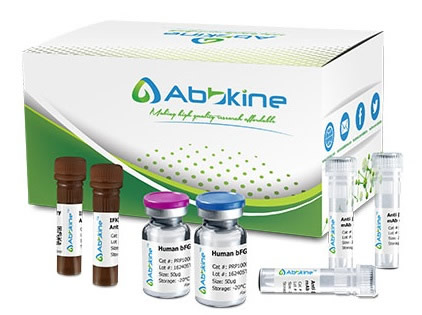TGF-β is capable of producing a variety of effects and virtually all cell types respond to this factor in some way. The inappropriate presence of active TGF-β1 has been implicated in a variety of pathological conditions Because of the necessity for regulating its activity tightly, TGF-β is secreted by cells in the form of an inactive complex. This complex consists of TGF-β1 associated non-covalently with a protein designated the latency associated peptide (LAP).TGF-β1 and LAP represent components of a pro-peptide that is cleaved in a post-golgi compartment prior to secretion. LAP and TGF-β1 each consist of a disulfide-linked homodimer and the association of these two components renders TGF-β1 inactive and inaccessible to anti-TGF-β antibodies.
Canine Transforming growth factor β1 (TGF-β1) ELISA Kit employs a two-site sandwich ELISA to quantitate TGFB1 in samples. An antibody specific for TGFB1 has been pre-coated onto a microplate. Standards and samples are pipetted into the wells and anyTGFB1 present is bound by the immobilized antibody. After removing any unbound substances, a biotin-conjugated antibody specific for TGFB1 is added to the wells. After washing, Streptavidin conjugated Horseradish Peroxidase (HRP) is added to the wells. Following a wash to remove any unbound avidin-enzyme reagent, a substrate solution is added to the wells and color develops in proportion to the amount of TGFB1 bound in the initial step. The color development is stopped and the intensity of the color is measured.
Canine Transforming growth factor β1 (TGF-β1) ELISA Kit listed herein is for research use only and is not intended for use in human or clinical diagnosis. Suggested applications of our products are not recommendations to use our products in violation of any patent or as a license. We cannot be responsible for patent infringements or other violations that may occur with the use of this product.
bio-equip.cn




